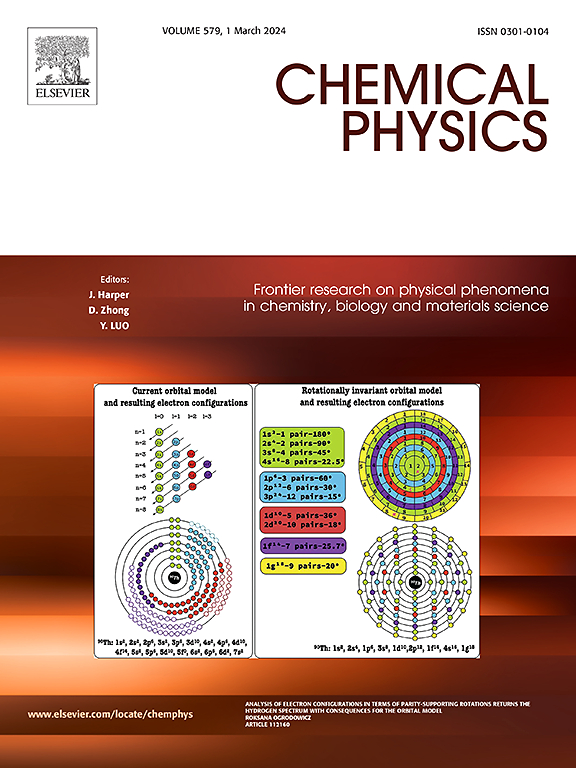An electronic approach to understanding the kinetics of hydrogen peroxide formation
IF 2
3区 化学
Q4 CHEMISTRY, PHYSICAL
引用次数: 0
Abstract
Hydrogen peroxide is an environmentally friendly oxidant that decomposes into water as its only byproduct. Various methods exist for its production, with direct synthesis standing out as a more sustainable and energy-efficient approach. This research introduces a kinetic model for the direct synthesis of hydrogen peroxide using catalysts, considering electron exchange between reaction intermediates and the catalyst. The model explains the size-dependent effects observed in Pd and Au nanocatalysts, offering insights for catalyst design in direct hydrogen peroxide synthesis. Furthermore, the electronic principles can be extended to the spontaneous formation of hydrogen peroxide at water/solid and air/droplet interfaces, shedding light on how the size of water microdroplets influences this process.
理解过氧化氢形成动力学的电子方法
过氧化氢是一种环境友好的氧化剂,分解成水是它唯一的副产品。它的生产有多种方法,直接合成作为一种更可持续、更节能的方法而脱颖而出。考虑催化剂与反应中间体之间的电子交换,建立了催化剂直接合成过氧化氢的动力学模型。该模型解释了钯和金纳米催化剂中观察到的尺寸依赖性效应,为过氧化氢直接合成催化剂的设计提供了见解。此外,电子原理可以扩展到水/固体和空气/液滴界面过氧化氢的自发形成,揭示了水微滴的大小如何影响这一过程。
本文章由计算机程序翻译,如有差异,请以英文原文为准。
求助全文
约1分钟内获得全文
求助全文
来源期刊

Chemical Physics
化学-物理:原子、分子和化学物理
CiteScore
4.60
自引率
4.30%
发文量
278
审稿时长
39 days
期刊介绍:
Chemical Physics publishes experimental and theoretical papers on all aspects of chemical physics. In this journal, experiments are related to theory, and in turn theoretical papers are related to present or future experiments. Subjects covered include: spectroscopy and molecular structure, interacting systems, relaxation phenomena, biological systems, materials, fundamental problems in molecular reactivity, molecular quantum theory and statistical mechanics. Computational chemistry studies of routine character are not appropriate for this journal.
 求助内容:
求助内容: 应助结果提醒方式:
应助结果提醒方式:


